Breathe, Breathe and Breathe
When I teach scuba dive, one question that is almost always asked by the newbies is “how long can the air tank last?”
When I teach scuba dive, one question that is almost always asked by the newbies is “how long can the air tank last?”
The answer is simple: for a good dive, the goal is always to maximize your time underwater by prolonging the air consumption rate. The air consumption rate will depend on how you breathe and move underwater. Broadly speaking:
The more vigorous movements you make, the more air you need to consume - if you move a lot (like kicking very hard), you are likely breathing shorter and faster. As a result, you will use up the air tank faster. If, however, you move slowly and breathe in a consistent pace, your air tank can last longer.
The more you move against a force, the more air you need to consume - If you are diving against the current, you will need to kick harder in order to move forward and, therefore, you will breathe faster and consume more air. However, if you are drift diving (i.e. let the current pushes you), you will be moving very little and, therefore, you will breathe slower and consume less air.
The more stressed you are (emotionally and physically), the more air you need to consume - When you are anxious and nervous, your breath is short and faster. When you are calm and relaxed, your breath is long and slower. During a dive, the slower you breathe, the lower your heart rate – and in turns, you become more calm and relaxed.
The more pressure you are under, the more air you need to consume - If you dive in shallow depth (like less than 15 metres), you are under less pressure and, therefore, can breathe smoothly and slower. However, if you go deep (like 20 – 40 metres), the pressure underwater will cause the air to become denser and therefore, harder to breathe. The tip is to breathe in a deliberately slower and longer pace.
Whether you are a scuba diver or not, by now you should see a pattern on how our breathing can be influenced by our own external and internal environments.
Likewise, it is easy to make the metaphorical correlation between being underwater and being above water. For the latter, we all are subject to pressure, stress, anxiety and negative energy and emotions. The breathing strategy for scuba diving is totally relevant and applicable to our daily life.
An amazing wonder of our human body is that we can consciously control our breathing. In fact, when we can control our breathing, we are aiding ourselves to become resilient.
In short, breathing is the foundation to good health and movement.
Here is a simple breathing exercise that you can do and with some variations that you can add later in your own time.
1-minute Breathing Exercise:
Sit on a chair with your back fully supported
Close your eyes to help you focus
Place the tip of your tongue against the back your upper teeth
INHALE through your nose into your lungs and to its maximum capacity
EXHALE through your nose, emptying your lungs like deflating a balloon
Repeat continuously for 1 minute (or until you want to stop).
It takes only 1 minute a day of your time as a starter. As you start to feel the benefits, you will naturally create more time for yourself to just do these breathing exercises.
Some additional variations that you can add later.
Variation 1 - Pace your inhaling and exhaling with specific length of time. For instance, INHALE and count 1 to 3 as you are inhaling; then EXHALE and count 1 to 3 as you are exhaling. Make it a smooth transition. Over time, as you become more familiar, you can extend the length of time for inhaling and exhaling.
Variation 2 - For scuba divers, you can switch to breathing through your mouth. At the same time, you INHALE by sipping air in slow motion and counting 1 to 5 or more until you fill up your lungs. Then you EXHALE by blowing air in slow motion and again counting 1 to 5 or more until your lungs are empty.
I would love to hear from you on your experience – even if you don't get the breathing exercise and have more questions about it. Please do get in touch by email to info@luxenova.co or by leaving a comment here.
Author: Stephanie Luo
How Fragrances Enhance My Creativity On and Off the Mat
A dear friend of mine, Céline, is a perfumer. She goes through life following her nose, so to speak; apprehending her environment with her sense of smell.
A dear friend of mine, Céline, is a perfumer. She goes through life following her nose, so to speak; apprehending her environment with her sense of smell.
She has never been to Hong Kong and recently asked me to describe the city from an olfactive point of view.
I started by telling her that:
HK is a city where people’s senses are constantly stimulated.The sense of smell is probably the one that people notice the less.Let’s start by the obvious, the malls.
Each has a signature smell, as do hotels and most modern buildings.
IFC used to smell like green tea when I moved here, and now their fragrance is a clean cologne (very close to CK One).
The Ritz Carlton is a traditional gentleman, with its woody fougere smell. K11 has a gourmand scent like sweet caramel and vanilla.
Hong Kong gets more interesting if you start walking on the streets.
In Sai Yin Pun, Queen’s Road West smells like dried fish and Chinese herbs.
The harbour on Tsim Sha Tsui side smells like tepid water, a very humid and penetrating smell.
The part of Tsim Sha Tsui where I live has many smells of food and people mixing all the time depending on which street corner: the clean smell of household products coming out of the supermarket, cold smoke and ashes on Prat Avenue, coconut waffles on Carnarvon Road, a potpourri of fragrances coming out of Sasa, the incense burning in a temple on Haiphong Road …
What struck me most from our conversation was that in describing to her the smells, I was intently focusing on my sense of smell and I was more present. It is very easy to go on autopilot mode when living in a city like Hong Kong for a while. Our senses get stimulated, overly and non-stop in this steroid-driven city.
I like to remind myself and my students how essential it is to be present in the here and now, present whatever we are doing. Our senses are a way to anchor our awareness in the present moment. We can repeat a mantra, light an incense, play a Tibetan bowl, choose a method that resonate with you.
To ensure that I am being present, I have created some ritual to help me reset and connect with my centre. For instance, after being out and about in the city, I go to my sanctuary corner , unroll my yoga mat, light a candle and then choose an incense to burn or a fragrance for my diffuser. I then sit down for a few moments with my eyes closed and senses inwards. I listen to my breath to help me tune in.
The simple act of sitting on my cushions starts the relaxation. The silence and fragrance help mereach a deeper level of awareness. As I sense further inwards, I become more present and eventually, the smell, noise and thoughts fade away. Then I meet myself in that sweet silent place.
Smelling the city for Céline reminded me once more how living with intent and awareness is crucial in our modern world. The fragrance you decide to smell, the food you choose to eat, the silence you surround yourself with. Everything counts. It also made me realise that my sense of smell is one of the most potent ones to enhance my creativity.
After this experience Céline and I decided to combine our passion for yoga and fragrances and offer a workshop at Luxe Nova; a nice afternoon (re)treat and rejuvenate yourselfwith yoga, fragrances and creativity. I will lead you through a yoga practice and guided meditations, and the tailor-made fragrances will activate your senses and intuition.
This unique combination of yoga and fragrances will help you become more connected with your inner self and gain clarity on your personal intention.
Join me and let your inspiration and your creativity flow.
Author: Virginie Morel
Virginie Morel will be hosting an afternoon workshop - Cultivate Your Creativity with Fragrances & Yoga.
Kundalini - the Yoga of Awareness
...I could sum up all these benefits in one single word: AWARENESS
“The first step toward change is awareness.
The second step is acceptance.”
~ Nathaniel Branden
The other day, a friend of mine asked me what I love the most about Kundalini Yoga. Having practiced yoga for the last eleven years, my love and passion for yoga continue to grow. So, I wanted to tell her what makes this particular style different.
Instantaneously, these words came up:
Empowerment – radiance – presence – breath – surrender - letting go – meditation – chanting - feel good…and so on.
As I reflect further, it is clear that I could sum up all these benefits in one single word: AWARENESS.
Over the time, I have become more aware of my body and my surrounding. I am more mindful, whether “on” or “off” the mat. My newfound self-awareness continues even after the class is done. I usually feel the effects for a long time and each time, I can delve little deeper than before.
These effects are amazing:
my stress level is lowered;
I sleep better;
I am more patient;
I smile more;
I have less cravings; and
my mind became less busy.
Little by little, I am living a better life with a clearer sense of who I am. The transformations that I saw in myself have happened from the inside out and quite rapidly. It is a living and on-going transformation for the better.
I am so grateful for having found yoga (especially, Kundalini yoga). As a yoga teacher, it is my love and passion to share the practice and transmit the benefits to students, giving them the tools to empower themselves.
As Yogi Bhajan (who introduced Kundalini Yoga to the West) used to say often - “Doing is Believing”. One cannot fathom yoga through words – just like you have to smell a fragrance in order to appreciate the scent and the perfumer’s craftsmanship - you need to practice and experience yoga for yourself.
Intrigued and wanting to know more?
Allow your curiosity be your guide and come join me for a session of Kundalini Yoga or the other related activities.
Namaste, Virginie
Author: Virginie Morel
"The Way Out is In", a heart opening journey with Win-Sie Tow
Win-Sid Tow, a determined and with mild temperament young woman, has ventured her way from her birth city, New York, to Hong Kong to connect with her ancestral root. Then she starts to pursue her life callings. At Luxe Nova, she has been teaching Yin & Restorative Yoga. And there is more...
Win-Sid Tow, a determined and with mild temperament young woman, has ventured her way from her birth city, New York, to Hong Kong to connect with her ancestral root. Then she starts to pursue her life callings. At Luxe Nova, she has been teaching Yin & Restorative Yoga. And there is more...
Of all the yoga teachers whom you have encountered, who has made the most impact on you?
Elena Brower. She teaches meditation and yoga in New York and wrote the book, “The Art of Attention,” which is a beautiful and creative study guide for your personal daily practice. I first knew her as an Anahata yoga teacher, which awakens the heart chakra, and now she teaches Katonah-style yoga, a Hatha practice with Taoist philosophy.
What has gravitated me to her evolving style is not only the asana practice but also her personal stories and authenticity, including her own struggles with addiction. I find her very inspiring, knowledgeable and heartfelt. Every practice with her has been a refreshing reboot for my mind, body, and spirit.
What asana would make you laugh when you practice? Why?
Shoulder-stand. I was teaching my boyfriend (then a friend) shoulder-stand when I lost my balance, and my butt ran into his face. Following suit, he also dropped down as he thought that was how the pose worked. I couldn’t stop laughing. He looked at me so strangely, trying to figure out what was going on and then cracked up himself. Every time I practice this pose, I remember that moment.
What is your favourite Yin asana?
Viparita kirani (legs up the wall). It’s a passive inversion and very calming, especially if you’re feeling anxious. I like to do it before I sleep.
What’s your second favourite Yin Asana? Why?
Pigeon. If you’ve been sitting a lot, feel hip compression, or have period cramps, it’s a great pose to release tension in the hips. I like to have a cushion underneath, like I’m receiving a soft hug from the ground. The longer you’re in it, the more you can relax into the pose. It can be intense yet calming.
You mention a lot about “heart-opening” when you talk about yoga. It clearly shows a huge significance for you. Why is that?
Other than the fact that our heart is what keeps us alive, it’s also the centre for our compassion and our ability to give and receive love, which is essentially why we’re here. Everything we do leads back to love and happiness. In busy HK, we’re multi-tasking and facing digital screens all the time, so it’s easy to compress and slump in our posture, which in turn creates a barrier in our interactions. Whether or not we’re aware of it, we’re constantly absorbing toxins, trauma, negative energies—big or small—from our daily interactions. When you counteract this with chest-opening poses, you can experience lightness, joy, and real connection. Be it yoga, dance, singing, writing or playing violin—whatever your method is to connect back to your heart, do it.
What was the most recent retreat that you’ve done?
I just participated in a Mindfulness teachers retreat and conference at Plum Village on Lantau Island. They follow the Buddhist teachings of Vietnamese monk, Thich Naht Hanh, who is so accessible to monastics and lay people alike.
We were singing a lot and sharing meals with the monks and nuns. We prepared food and exercised together, which was refreshing. They stress the importance of “Sangha,” which means community. I didn’t have any expectations going into the retreat, so I had a fantastic time. I’d like to visit Plum Village in France where Brother Thay is based.
What resonated with me the most is their motto: “The way out is in.” We tend to look outside for answers instead of trusting in ourselves. The medicine we are looking for is already inside of each and every one of us. It was a nice reminder that we’re all on the same path even if we approach it from different perspectives.
Where is your next retreat?
I’ll be serving a 10-day Vipassana retreat in Kyoto. It’s an ancient Indian meditation technique, which means “insight” and to see things as they are.
What’s so great about vipassana is that it’s non-sectarian and anyone can practice it anywhere in the world. The retreats are donation-based and open to anyone so long as you agree to 10 days of silence; no communication with others; no killing, lying, stealing, intoxicants or sex. You wake up at 4am, meditate for about 10 hours a day, and are in bed by 9:30pm. The method is deceptively simple: to observe the breath and your body sensations; and in doing so, realize that everything is impermanent. A lot of memories and thoughts start to bubble up to the surface, things you’ve been compartmentalizing or too busy to think about. It’s my annual “mental” detox. I did my first course two years ago and it was transformative. All of these methods bring me back to my heart centre.
So, what will be your “last meal” before going into this retreat?
Something vegetarian.
Up-close & Personal with Nasci Lobo
What have Pakistan, Canada, Australia, Japan and Hong Kong all got in common?
- Nasci Lobo
What have Pakistan, Canada, Australia, Japan and Hong Kong all got in common? - Interview with Nasci Lobo
Where do you come from?
Well, it is a bit of complicated background...my family origin is from Goa, India...I was born in Karachi, Pakistan. Then we moved to Toronto, Canada when I was 7 and grew up there. I have lived in Australia for a little bit and then Japan for a lot - 16 years - and now Hong Kong.
Where would you call home?
Good question. It depends on which aspects we are talking about. If it is where I was growing up, then it is Canada. If it is a place of permanence or a sense of permanence, I would say that it is between Canada and Japan. Hong Kong is a temporary home for now.
What is Hong Kong to you?
Temporary home.
Tell me about your time in Japan...what took you there?
In university, I studied a bit about Japanese culture, sociology and economics. When I was in Australia, I had the opportunity to move to Japan under a government-run programme where I could teach English in local schools in Japan. And there I was for 16 years - for a combination of reasons, including family, the love of Japanese culture and martial arts, and eventually translating and interpreting. . I studied Aikido for 6-7 years and got my black-belt in that.
You have a black-belt in Aikido. So what is Aikido?
It is a form of martial art, started in around lat 1930s. In Kanji, Aikido is made up of "Ai" (合) meaning join and harmony, "Ki" (氣) meaning chi or energy and "Do" (道) meaning the path. In short, it is to join the energy of the other person's energy or Ki, so that you are joining the momentum of their energy and to use that to your advantage. There is no punching or kicking. It has to do with turning the joints, wrists and shoulders, say, to immobilise them using different pressure points on the arms or shoulders. Sometimes you may use a wooden sword for practice. It is mostly to do with using the other person's Chi and breath control to execute whatever you have to do.
You mentioned that you started to practice mediation in Japan. Was it due to Aikido?
Practicing meditation was definitely an extension of Aikido. In martial arts, mental discipline is developed. However, the origin of my meditation practice in Japan was with Zen meditation. I used to go to a Buddhist temple near my house. The meditation classes were free - or you just need to make some donations to the temple and the monks would teach you Zen meditation. Then we used to have tea and chat about Zen practice afterwards. I have continued that practice as much as I can now, maybe once a week.
Do you practice walking meditation?
No. I have tried it in Japan but have never taken to it. I am active and enjoy various sports like rock climbing, hiking and scuba diving. When it comes to meditation, I still prefer the silent and sitting version of meditation. Perhaps, it has something to do with martial arts practice - because I enjoy the quite time after practicing martial arts.
How did you then start practicing mindfulness as it is a different type of discipline and mental exercise?
Mindfulness started through an extension of yoga, which I started to get into in 2004 in Japan. I started to practice more, including Yin yoga, which was how I started to move towards mindfulness. At the Canadian International School of Hong Kong where I work, it started with the request from a programme coordinator to introduce a course to the students, focusing on concentration / mindfulness and relaxation. As a counsellor, she saw the stress that students would be subject to, and felt that such practices could provide them with a tool to manage the stress. As a result, we started with Grade 11 students. It began with a once-a-year session, then expanded to twice-a-year and then to multiple grades (grades 9 - 12).
What is the mindfulness training at the school like?
This is considered as pastoral care for the students, instead of part of regular curriculum. So it is not yet a frequent and regular practice, like weekly or monthly practice. There are now 3 people teaching mindfulness, which can be a combination of breathing practice, body-scan and concentration. The focus is on stress management. We don't teach meditation.
What transformations that you have seen in the students?
I also teach the students yoga sometimes. So with a combination of yoga and mindfulness, we have received a lot good feedback from them. Many of the students have said that they didn't expect much before doing it because they thought it was something that was unfounded or unrelated to what they were doing at school. But after the session, even with just a 30-minute session, they found that they enjoyed it because it has made them feel calmer. "Calmer" is the description most frequently provided by them. One of the students came to me the day after a session and told me, "I have not slept well for a long time but I slept very well last night after the session". Others were also saying that although the techniques, like breathing, were simple, they were effective and made them feel more relaxed than they originally expected. They could see how they could apply it, say, during exam period. As a result, we also started a yoga club for the students for some time . Many of them are athletes and have found the yoga practice to be very beneficial.
Quote from a student, “Coming out of yoga nidra specifically, I find that it alleviates literally all of my stress and gives me a good night's sleep. I have a habit of overwhelming myself with so much work that I can just barely manage, but after going through those exercises as well as others that relate to breathing, it helps with calming me down. It gives me a moment to not only reconnect with myself, but also repair my body and psyche.”
What's you comfort food?
Chocolate...definitely chocolate
What book are you reading now?
I just finished reading Anatomy Trains by Thomas Myers. It is about fascia, how your body is connected by fascia, instead of muscles and bones, and how it relates to the movements in yoga.
When was last time you got drunk?
At a wedding of my friends recently.
We know that you also teach on a popular online yoga platform. What's the most memorable moment when teaching online?
It was probably my second online yoga class. A group of my friends got together to have a hot-pot party (which I was invited to but had to step out of to teach this particular class). They then signed on to join the class live - where I could see on my screen that they were having the hot pot as well as getting into some asana poses. I think they were impressed by how well composed I was!
What's your least favourite food in Japan?
It took me a while to get use to natto (fermented soya beans) but now I love it. The one thing that I am still not used to is takuwan (Japanese pickle daikon)
You travel to Taiwan quite a bit, mostly for rock climbing. Have you braved your way through the local stinky tofu yet?
Nasci demonstrating his favourite pose "Eka pada bakasana"
No, I think it may need to take another 10 years or more!
On your next trip to Taiwan, what will be the first food you look for?
Beef Noodle...
What's your favourite yoga pose?
Eka pada bakasana^
(^One-legged Crane pose, a pose that strikes a chord of fear in the heart of all arm-balancing yogis.)




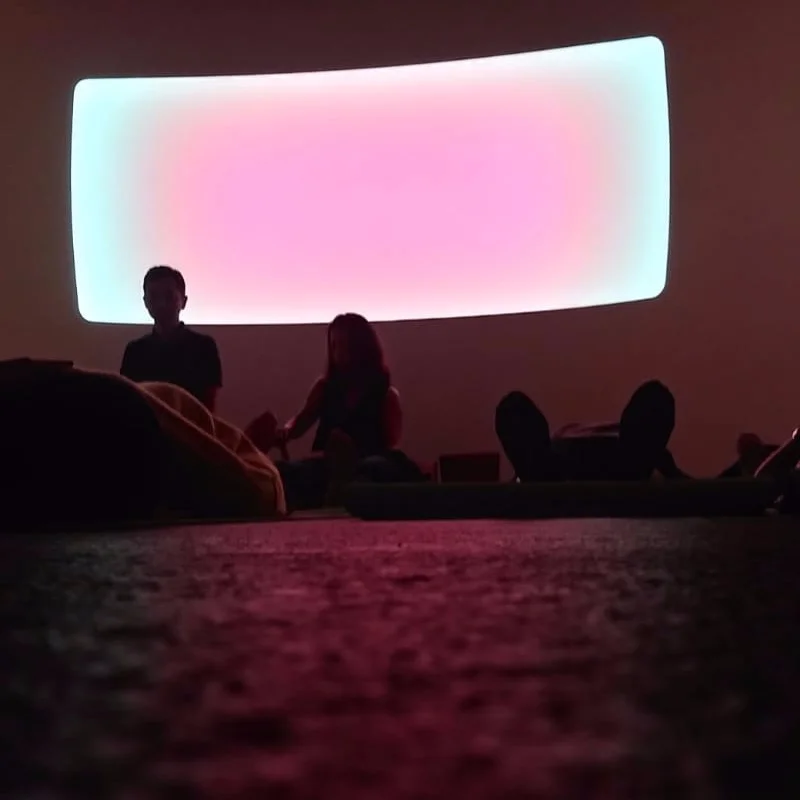




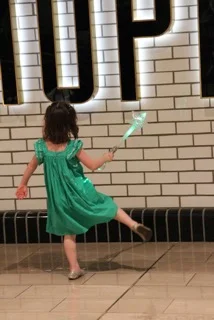


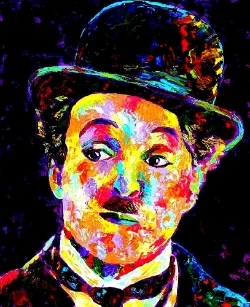










![[VMorel] Street Meditation IMG_5454 - 2017-05-14 at 09-33-56.jpg](https://images.squarespace-cdn.com/content/v1/54e9744ee4b02e8e02363a87/1494726134236-OAPG0JVSIXJFNZ9BGLL6/%5BVMorel%5D+Street+Meditation+IMG_5454+-+2017-05-14+at+09-33-56.jpg)
![[VMorel] Flower IMG_7241 - 2017-03-19 at 07-09-16.jpg](https://images.squarespace-cdn.com/content/v1/54e9744ee4b02e8e02363a87/1494726664812-GHYQ0R5YJBQLN4GM4MQD/%5BVMorel%5D+Flower+IMG_7241+-+2017-03-19+at+07-09-16.jpg)
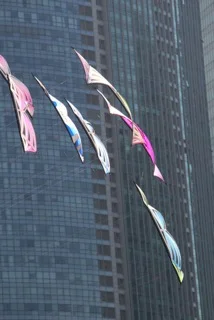

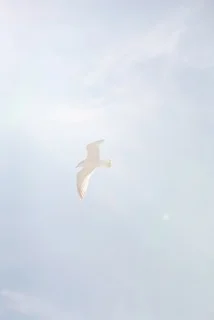











Authenticity and spiritual intelligence are co-related…